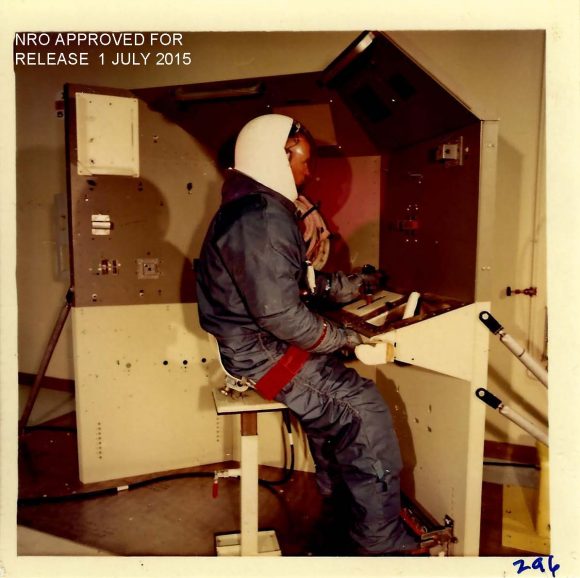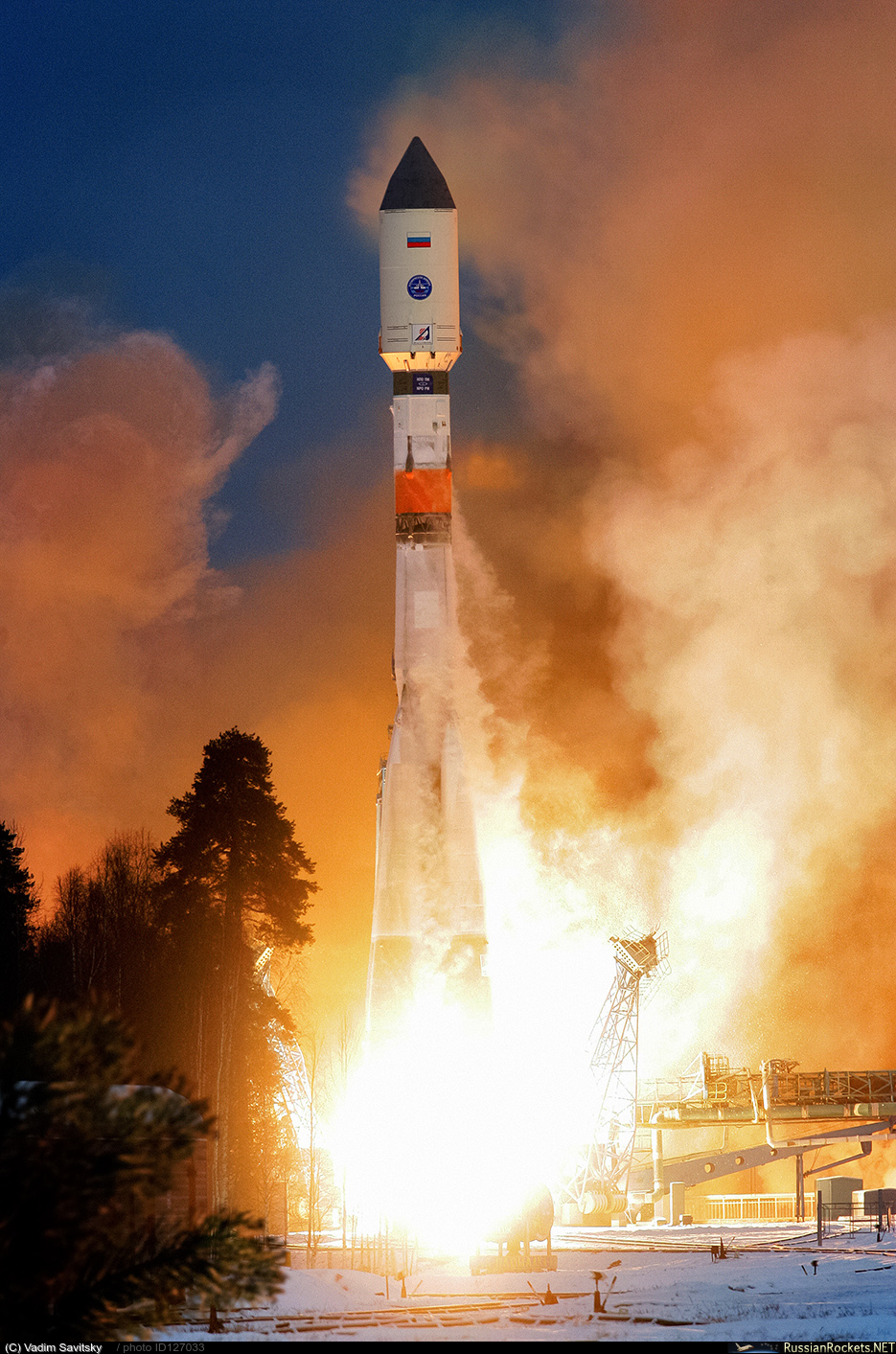Desclasificación cósmica: revelan un proyecto espía espacial de EE.UU. de la Guerra Fría
Publicado: 5 ene 2016 02:05 GMT
El programa contaba con un sistema fotográfico mejor que las más potentes cámaras actuales.

Foto ilustrativa del proyecto del Laboratorio Orbital Tripulado (MOL) / nro.gov
Datos históricos recién publicados revelan detalles intrigantes sobre un proyecto secreto estadounidense de la época de la Guerra Fría conocido como Laboratorio Orbital Tripulado (MOL, por sus siglas en inglés), informa el portal Scientific American. Su desarrollo empezó en diciembre del 1963 y duró hasta su cancelación en junio del 1969. De acuerdo con algunas estimaciones, el programa costó 1.560 millones de dólares.
A pesar de que el programa nunca llegó a lanzar ninguna estación espacial tripulada, durante los casi seis años en que estuvo vigente se llevaron a cabo multitud de actividades relacionadas con la remodelación de la nave espacial de dos asientos Gemini de la NASA, el desarrollo del vehículo de lanzamiento Titan-3C y la construcción de un sitio de lanzamiento MOL en la Base Vandenberg de la Fuerza Aérea en California.
Mientras tanto, las filtraciones señalan que al principio ni siquiera los propios arquitectos del proyecto sabían en qué consistía MOL. "¿Es un laboratorio o una nave de reconocimiento operacional? (¿o un terrorista?)", dice uno de los documentos recién desclasificados por la Oficina Nacional de Reconocimiento de EE.UU. (NRO, por sus siglas en inglés).
Las herramientas y funciones superpotentes del MOL
De acuerdo con los documentos, las funciones previstas para las tripulaciones del MOL incluían actividades de reconocimiento bajo el nombre en clave de 'proyecto Dorian', un sistema de cámaras superpotentes que podía cubrir fotográficamente la Unión Soviética y otros lugares con una resolución mayor que la del mejor sistema no tripulado de la nave espacial de primera generación de la NRO, la Gambit, que existe actualmente.
No obstante, los documentos históricos sugieren que muchos otros proyectos estaban en la agenda del MOL, incluyendo el uso del radar de visión lateral, la evaluación de equipos de recopilación de inteligencia electrónica y el montaje y mantenimiento de grandes estructuras en el espacio. También se discutió el uso en el proyecto de un sistema de "rechazo de misiles" transportado por el MOL, que utilizaría ojivas no nucleares; así como la inspección de satélites y el encapsulamiento y la recuperación de naves enemigas, que podría haber sido realizada con la ayuda de dispositivos netos propulsados por cohetes.
En cuanto a los miembros de la tripulación, se consideró clave una unidad de maniobra a distancia para acercarse a un objetivo y circunnavegarlo, mientras el astronauta se mantenía a una distancia suficiente "para prevenir el daño provocado por una defensa activa o un objetivo minado".
Sin embargo, a pesar de la desclasificación del documento, de casi 20.000 páginas, incluso hoy en día la mayoría de los aspectos de la iniciativa MOL se mantienen en secreto.

Vuelo de prueba del Laboratorio Orbital Tripulado (MOL) desde el Complejo de Lanzamiento 40/nro.gov
https://actualidad.rt.com/actualidad/196006-proyecto-espia-espacial-eeuu-fria
Publicado: 5 ene 2016 02:05 GMT
El programa contaba con un sistema fotográfico mejor que las más potentes cámaras actuales.

Foto ilustrativa del proyecto del Laboratorio Orbital Tripulado (MOL) / nro.gov
Datos históricos recién publicados revelan detalles intrigantes sobre un proyecto secreto estadounidense de la época de la Guerra Fría conocido como Laboratorio Orbital Tripulado (MOL, por sus siglas en inglés), informa el portal Scientific American. Su desarrollo empezó en diciembre del 1963 y duró hasta su cancelación en junio del 1969. De acuerdo con algunas estimaciones, el programa costó 1.560 millones de dólares.
A pesar de que el programa nunca llegó a lanzar ninguna estación espacial tripulada, durante los casi seis años en que estuvo vigente se llevaron a cabo multitud de actividades relacionadas con la remodelación de la nave espacial de dos asientos Gemini de la NASA, el desarrollo del vehículo de lanzamiento Titan-3C y la construcción de un sitio de lanzamiento MOL en la Base Vandenberg de la Fuerza Aérea en California.
Mientras tanto, las filtraciones señalan que al principio ni siquiera los propios arquitectos del proyecto sabían en qué consistía MOL. "¿Es un laboratorio o una nave de reconocimiento operacional? (¿o un terrorista?)", dice uno de los documentos recién desclasificados por la Oficina Nacional de Reconocimiento de EE.UU. (NRO, por sus siglas en inglés).
Las herramientas y funciones superpotentes del MOL
De acuerdo con los documentos, las funciones previstas para las tripulaciones del MOL incluían actividades de reconocimiento bajo el nombre en clave de 'proyecto Dorian', un sistema de cámaras superpotentes que podía cubrir fotográficamente la Unión Soviética y otros lugares con una resolución mayor que la del mejor sistema no tripulado de la nave espacial de primera generación de la NRO, la Gambit, que existe actualmente.
No obstante, los documentos históricos sugieren que muchos otros proyectos estaban en la agenda del MOL, incluyendo el uso del radar de visión lateral, la evaluación de equipos de recopilación de inteligencia electrónica y el montaje y mantenimiento de grandes estructuras en el espacio. También se discutió el uso en el proyecto de un sistema de "rechazo de misiles" transportado por el MOL, que utilizaría ojivas no nucleares; así como la inspección de satélites y el encapsulamiento y la recuperación de naves enemigas, que podría haber sido realizada con la ayuda de dispositivos netos propulsados por cohetes.
En cuanto a los miembros de la tripulación, se consideró clave una unidad de maniobra a distancia para acercarse a un objetivo y circunnavegarlo, mientras el astronauta se mantenía a una distancia suficiente "para prevenir el daño provocado por una defensa activa o un objetivo minado".
Sin embargo, a pesar de la desclasificación del documento, de casi 20.000 páginas, incluso hoy en día la mayoría de los aspectos de la iniciativa MOL se mantienen en secreto.

Vuelo de prueba del Laboratorio Orbital Tripulado (MOL) desde el Complejo de Lanzamiento 40/nro.gov
https://actualidad.rt.com/actualidad/196006-proyecto-espia-espacial-eeuu-fria


 to be mined. A single platinum-rich space rock 1,650 feet (500 meters) wide contains the equivalent of all the platinum-group metals ever mined throughout human history, company officials said.
to be mined. A single platinum-rich space rock 1,650 feet (500 meters) wide contains the equivalent of all the platinum-group metals ever mined throughout human history, company officials said.











